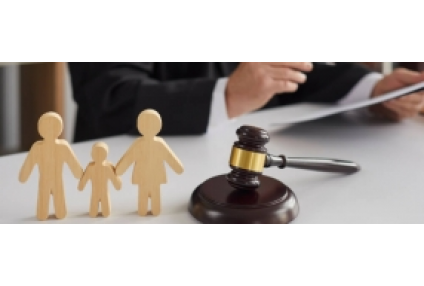InKozi technology company creates a uber-like app for lawyers
Introduction to InKozi Technology Company InKozi's Background and Expertise The Importance of Technological Innovations in the Legal Sector InKozi Technology Company has emerged as a pioneering force in the legal tech industry, revolutionizing the way legal services are accessed and delivered. With a deep understanding of the challenges faced by both lawyers and clients, InKozi has developed an Uber-like app specifically tailored for the legal profession. This article explores the groundbreaking features and benefits of InKozi's app, as well as its potential impact on the legal profession. With a commitment to enhancing efficiency, accessibility, and convenience, InKozi's app aims to streamline legal services, empower lawyers, and transform the legal landscape. The Need for Innovation in the Legal Industry Challenges Faced by Lawyers and Law Firms Lawyers and law firms face numerous challenges, from managing heavy caseloads to juggling multiple clients. The traditional approach to legal work often results in inefficiencies, delays, and overwhelmed professionals. It has become evident that innovative solutions are needed to simplify workflows, increase productivity, and ultimately improve client satisfaction. The Rise of On-Demand Services in Various Industries The success of on-demand services in various industries, such as transportation and food delivery, has inspired a new wave of thinking across different sectors. Clients today expect services to be conveniently accessible at their fingertips. With the rise of on-demand services, the legal industry can no longer afford to lag behind, which is why Inkozi has developed an Uber-like app for lawyers. Overview of the Uber-like App for Lawyers InKozi's Vision for the Legal App InKozi's vision for the legal app is to create a platform that connects lawyers with clients in a seamless and efficient manner. The app aims to simplify the process of finding legal representation by providing a user-friendly interface and a robust database of qualified lawyers. InKozi wants to empower both lawyers and clients by leveraging technology to bridge the gap between them. How the App Adapts the Uber Model for Legal Services Taking inspiration from the success of Uber, InKozi has adapted the on-demand model to suit the legal industry. Just like Uber connects passengers with drivers, the InKozi app connects clients with lawyers. Clients can easily request legal assistance, view lawyer profiles, and choose the most suitable professional based on their specific needs. This innovative approach revolutionizes the way clients find legal representation. Rating and Review System for Lawyers To help clients make informed decisions, the app incorporates a rating and review system for lawyers. Clients can provide feedback and rate their experiences, allowing future users to choose lawyers based on the experiences of others. This feature promotes transparency and helps maintain high standards of service within the legal community. How the App Streamlines Legal Services for Clients Convenient and User-Friendly Interface Say goodbye to the days of sifting through the Yellow Pages or endlessly Googling for a lawyer. InKozi's app brings legal services right to your fingertips with its convenient and user-friendly interface. Need legal advice on the go? No problem. Just whip out your phone, open the app, and connect with a lawyer in a matter of seconds. Efficient Lawyer Matching and Selection Process Finding the right lawyer can be like finding a needle in a haystack. But InKozi's app takes the stress out of the equation by streamlining the lawyer matching and selection process. Simply input your legal needs, and the app will use its sophisticated algorithms to match you with the most suitable lawyers based on their expertise, experience, and even client reviews. It's like having your own personal matchmaking service, but for lawyers. Expanding Client Reach and Market Opportunities Lawyers no longer have to rely solely on word-of-mouth referrals. With InKozi's app, they can tap into a broader client base and expand their reach like never before. The app opens up new market opportunities for lawyers, allowing them to connect with clients from different locations, backgrounds, and needs. So whether you're an immigration attorney specializing in green cards or a divorce lawyer with a penchant for solving messy breakups, Inkozi's app helps you find your perfect match. Potential Impact on the Legal Profession Disruption and Transformation of Traditional Legal Practices The legal profession, often seen as a bastion of tradition, is about to be shaken up. With InKozi's app, traditional legal practices are facing a digital revolution. Gone are the days of brick and mortar law firms being the only option. The app challenges the status quo by providing a platform that embraces technology and harnesses its power to transform the way legal services are delivered. Opportunities for Solo Practitioners and Small Firms InKozi's app levels the playing field for solo practitioners and small law firms. It allows them to compete on a more even playing field with larger firms by providing them with the tools and platform they need to showcase their expertise and attract clients. So, don't let the size of your firm hold you back. With InKozi's app, the sky's the limit. Ethical and Regulatory Considerations Of course, with great power comes great responsibility. As the legal tech industry evolves, it's important to address the ethical and regulatory considerations that come along with it. InKozi is committed to working hand in hand with legal professionals and regulatory bodies to ensure that the app operates within the bounds of ethical standards and complies with all relevant regulations. After all, we're here to make lawyers' lives easier, not add to their headaches. Conclusion and Future of Inkozi's App for Lawyers Summary of the App's Benefits and Potential InKozi's app for lawyers is revolutionizing the legal industry by making legal services more accessible, efficient, and transparent. Clients can find the right lawyer with ease, while lawyers can enhance their productivity and expand their client base. The app brings convenience and efficiency to the forefront, making the legal process smoother for everyone involved. Anticipated Growth and Evolution in the Legal Tech Industry With the rapid advancement of technology, the legal tech industry is bound to experience tremendous growth and evolution. InKozi is at the forefront of this exciting journey, constantly innovating and adapting to meet the changing needs of clients and lawyers. As we move forward, we can expect to see even more groundbreaking developments that will reshape the legal landscape for the better. So, buckle up, because the future of law is here, and it's in the palm of your hand.8. Conclusion and Future of Inkozi's App for Lawyers Summary of the App's Benefits and Potential Anticipated Growth and Evolution in the Legal Tech Industry InKozi's Uber-like app for lawyers represents a significant leap forward in the legal tech space. By harnessing the power of technology, InKozi has successfully created a platform that simplifies and enhances the way lawyers and clients connect and collaborate. As the legal tech industry continues to evolve, we can anticipate further innovation and expansion in the realm of on-demand legal services. InKozi's app serves as a testament to the immense possibilities that lie ahead, as we embrace technology to reshape and improve the legal landscape. FAQs about Inkozi's Uber-like App for Lawyers: FAQ








